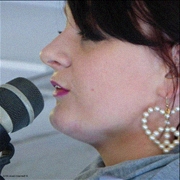Tutor HuntResources Drama Resources
Scriptwriting
Example of academic writing, from a longer piece of writing on scriptwriting.
Date : 16/06/2014
Author Information

Uploaded by : Samantha
Uploaded on : 16/06/2014
Subject : Drama
scri pt development: a reflective account
Introduction This reflective account will discuss the writing process for scene 4 of Moth, a short play that, through the setting of civil war, explores the splintering effects of trauma. It will explain how the context, story, configuration and dramatic devices (Katafiasz, 2014a) were developed to achieve the final piece. In this, reference will be made to the influence of key theorists, dramatists and group workshops throughout the creative writing module. Moth was a creative response to my dissertation study of Holocaust representation, and the dramatist Edward Bond's, theoretical relationship to Auschwitz. In this, I argued that literature that referenced or cited the Holocaust (cites) alienated audiences, whilst Bond's 'site' encouraged them to confront the values that led to, and present in the Holocaust. My own writing responded to both strands of the research. It was inspired by both Holocaust art (see fig.2), and my deeply personal response to Bond's innovative form (more on this later). Given the highly charged subject matter, I aim to explain the rationale for my choices, but remain distant enough to critique their effectiveness (Brande, 1981, p.43).
Temporal distance: finding inspiration The inspiration for scene 4 stemmed from the sculpture Belsen Head (Mason, 1945), a reaction to photographs of the liberated death camps. Having seen this piece as part of the exhibition, Caught in the crossfire (The Hebert Art Gallery and Museum, 2013). I was deeply moved by the idea that our physical and temporal distance from the events of the Holocaust did not truly separate us, the post-Auschwitz generations, from our own violence and inhumanity. The maelstrom of feelings looking at this piece invoked were a result of what semiotic theorist Roland Barthes called a "punctum" (Barthes, 1993, p.96), or a particular point of the image that captured the onlooker's gaze and generated an emotive reaction. This was particularly relevant to Holocaust representation in art, because here, punctums were about the physical and temporal loss associated with remembering a now absent event in the (Bernard-Donals, 2004; Hirsch, 2008; Hirsch and Spritzer, 2009). Similarly, as I looked into the hollowed out eye sockets of Mason's sculpture, the absence of light, a spark of light, triggered thoughts on the process of grief. I wondered how, in the time between 1945 and me, the onlooker as part of the post-Auschwitz generation, the Holocaust was remembered. Had it become a voiceless- an event of which we dared not speak? Could depravity and inhumanity ever be reconciled? In the creative writing process of this module, I intended to explore these questions. I wanted to share with the audience that, for me, although the Holocaust was over, its memory and values were palpable in the present day (Murjas and McMullan, 2014).
This resource was uploaded by: Samantha
